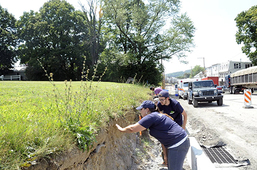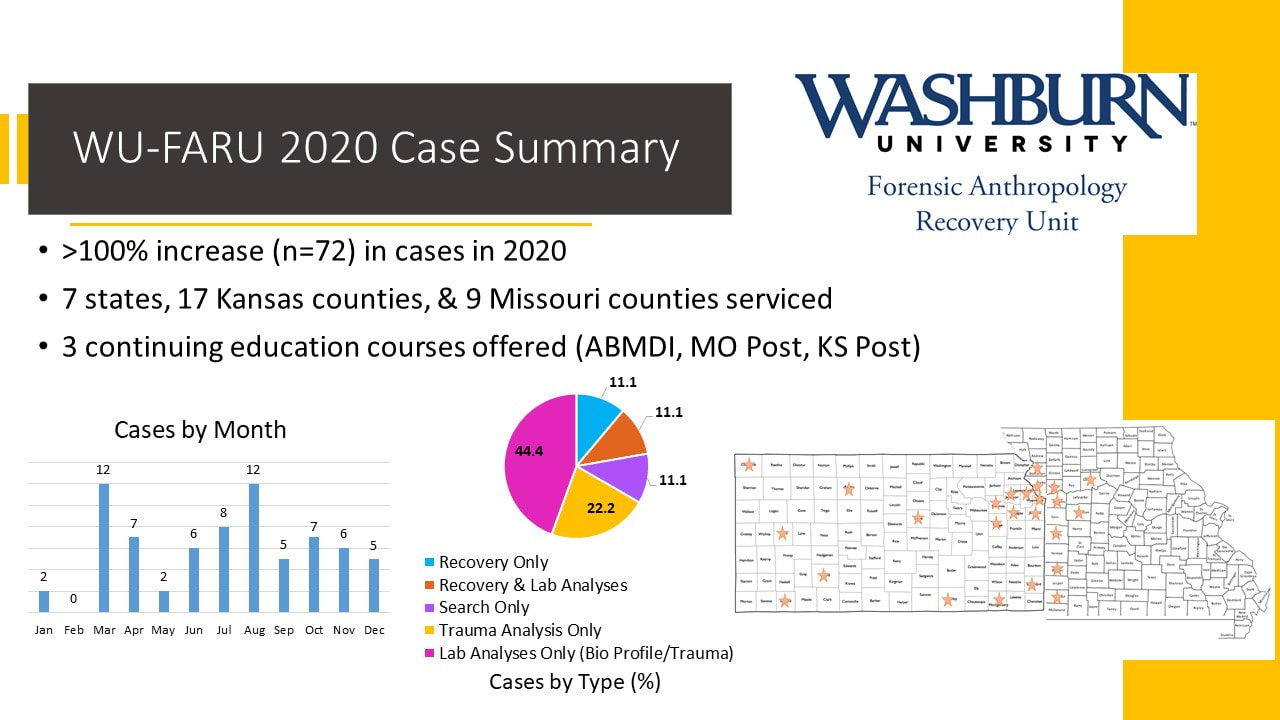|
To request forensic services, please contact Dr. Klales at
[email protected] or 785.230.7338 or visit the official WU-FARU website at https://www.washburn.edu/wu-faru/ Dr. Klales is a Diplomate of the American Board of Forensic Anthropology (#123) and is a Member of the Anthropology Section of the American Academy of Forensic Sciences. Dr. Klales has worked on over 300 active forensic cases, including more than 40 forensic archaeological recoveries, several plane crashes, and multiple fatal fires. She first began working on active forensic casework in 2007 as a graduate student training under Pennsylvania’s only two board certified forensic anthropologists. Upon completion of her Ph.D. in 2014, she began directing recoveries and served as lead forensic anthropologist on active forensic case reports at Mercyhurst University. In 2016, she accepted a position at Washburn University to lead their new Forensic B.S. Anthropology Program and she is currently Director of the Washburn University Forensic Anthropology Recovery Unit. |
Forensic Anthropological Services
Forensic Archaeological
|
Laboratory Analysis of Remains
|
Determining Significance
|
Training SeminarsIndividualized training seminars and field exercises are available for varying duration in forensic archaeology, forensic anthropology, trauma analysis, forensic significance, fatal vehicle/structure fires, mass disaster recoveries, and laboratory methods in forensic anthropology. These course can be tailored to your specific wants and needs.
|
Forensic ID of Cold CasesRe-examine human remains, especially skeletonized or badly decomposed human remains, to establish the biological profile and report information that can 1) narrow the list of potential victims and 2) can be used to make a positive identification of the deceased.
|
Bone Trauma AnalysisDetermine bone trauma timing as antemortem, perimortem, or postmortem. Differentiation of sharp, blunt force, ballistic, and fire trauma. Recognition and analysis of child and elder abuse is also available. Trauma analysis has the potential to contribute information related to the cause and manner of death.
|


